May Day
Of course, the Chinese trade press has been extoling the ‘massive’ growth in large TV sets, essentially those between 85” and 100”, so we were curious as to the validity of those claims, but we also note that China’s “New for Old” rebate program, which offers rebates on all TV sets that meet certain energy guidelines with a maximum of $272 (US) per set, remains in effect, which skews sales to larger sizes. On a gross basis, the in-store size average of TV sets sold in China during this year’s May Day was 71.4”, up 2.0” from last year, while that average in online stores was 62.7”, up 2.5” y/y. While 98” and 100” sets increased by large percentages y/y the actual volumes for these large sets are still small (23,537 combined for May Day 2025), while 85” set volume was almost 5 times the number of 98” and 100” sets sold, making the increase in set size more of an 85” story than a 98”/100” one.
The Chinese trade press also championed the same ultra-large story with the fact that sales value increased9.3% y/y during the holiday, which many attribute to the larger number of 98” and 100” sets, but it is almost impossible to disaggregate the increase in sales value across all TV set sizes as smaller 65” – 85” sets could have seen price increases between2024 and 2025. We don’t doubt that ultra-large TV set unit volumes have been increasing in China, but there is also the concept that if Chinese buyers are able to afford such large TV sets, the Chinese consumer is ‘richer’ and more successful, something that the Chinese government has been promoting over the last few years. It is difficult to separate the fact from fiction.
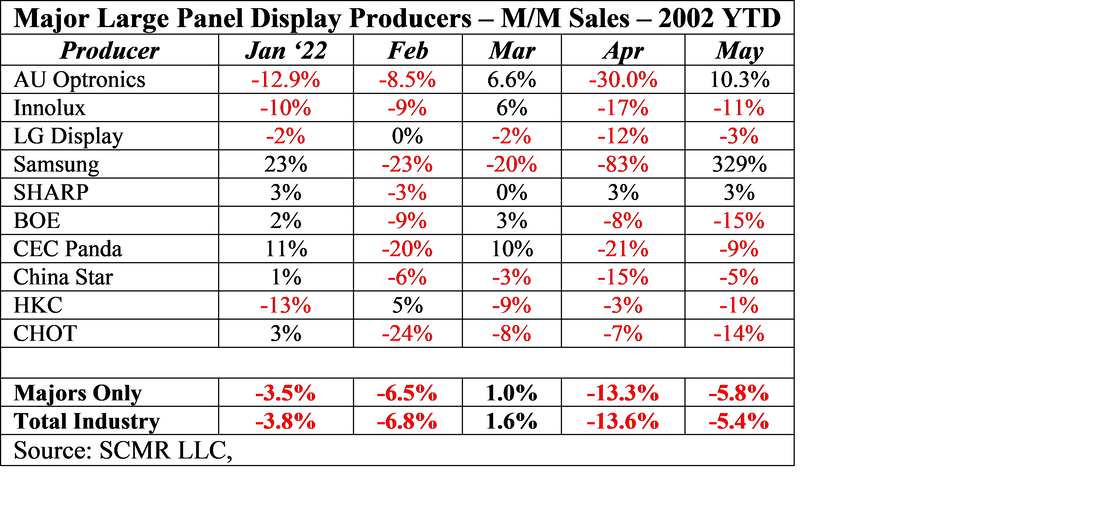
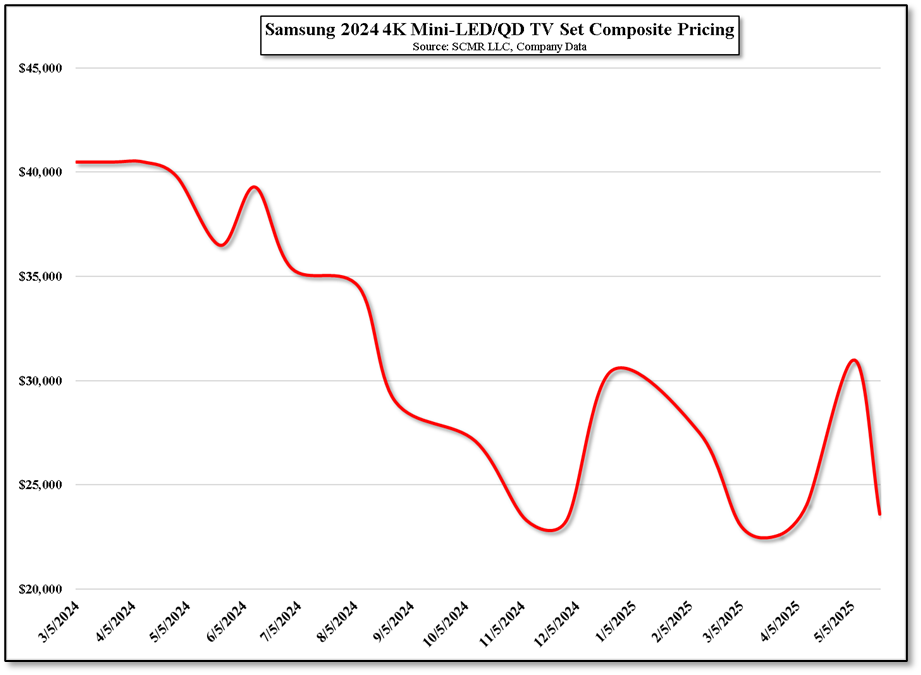
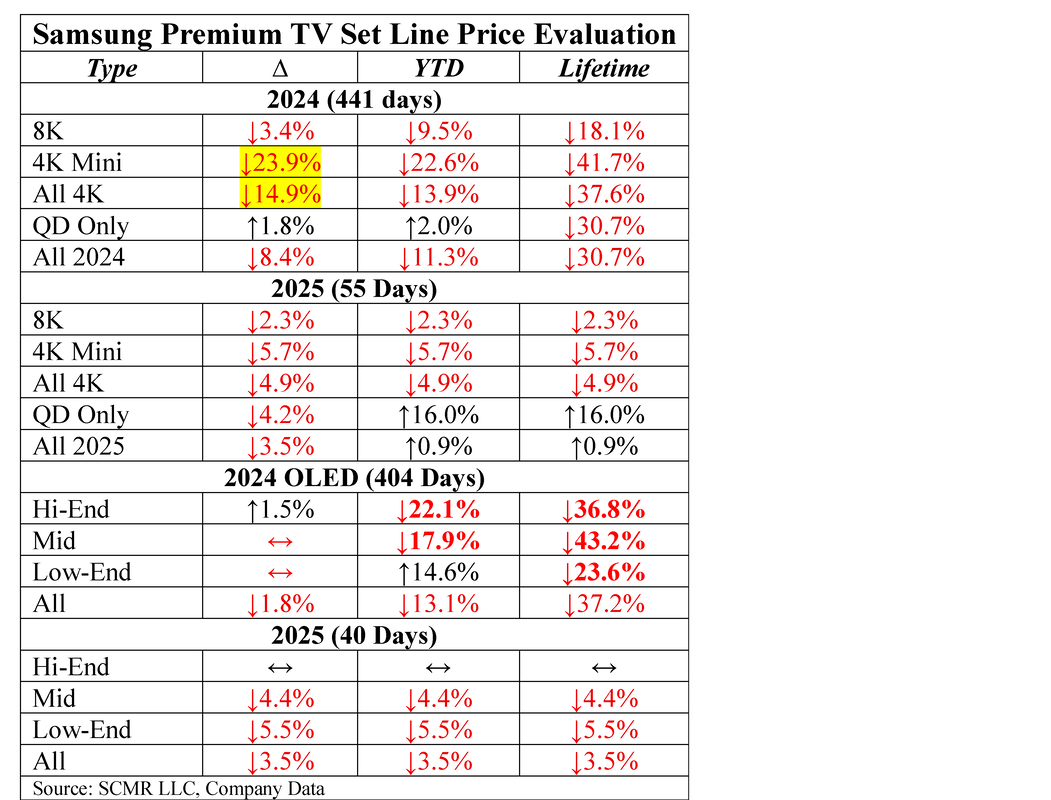

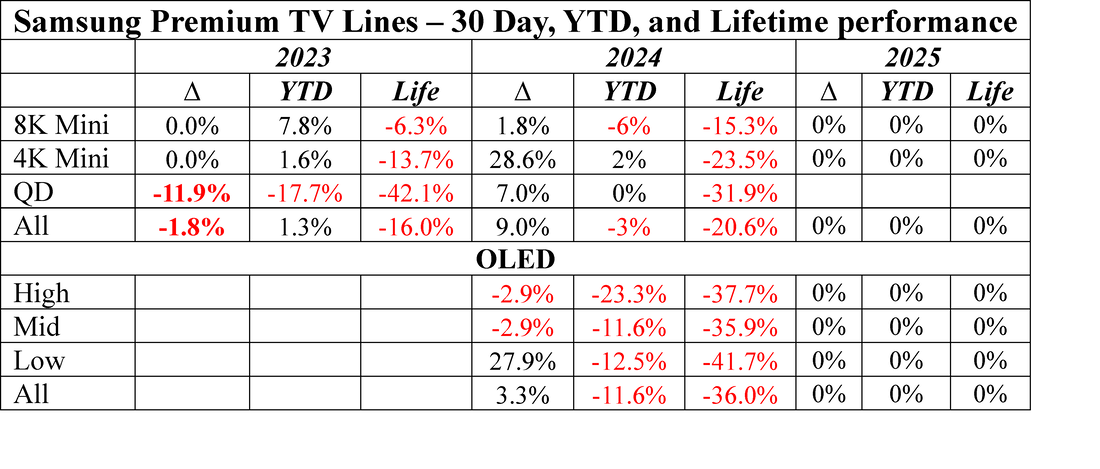


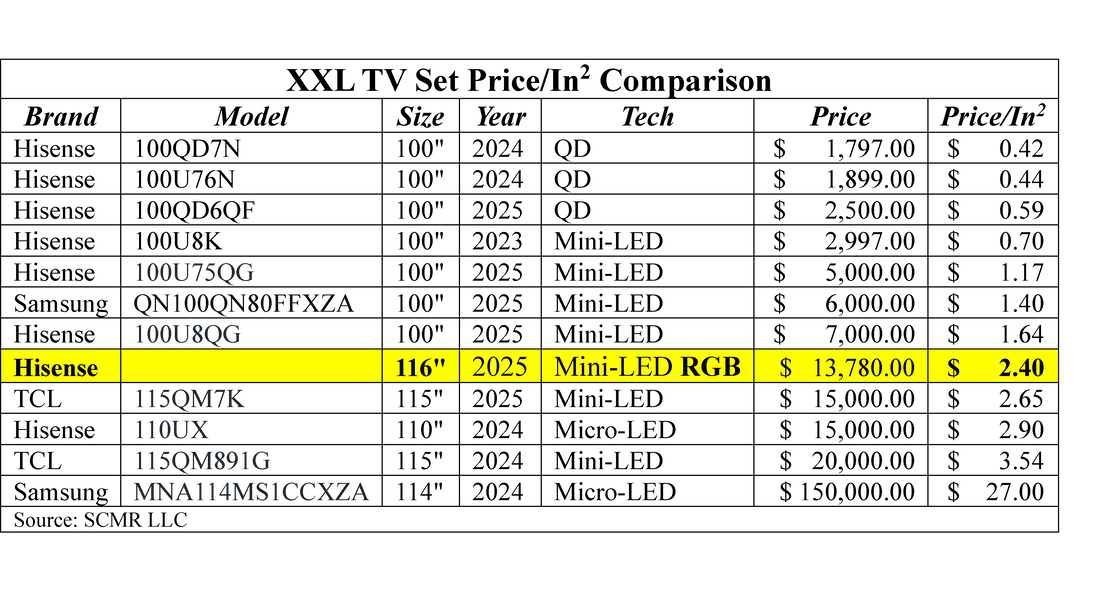
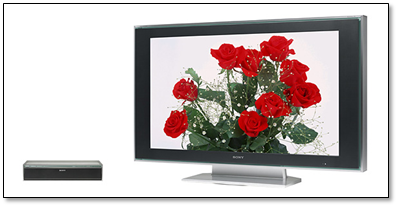
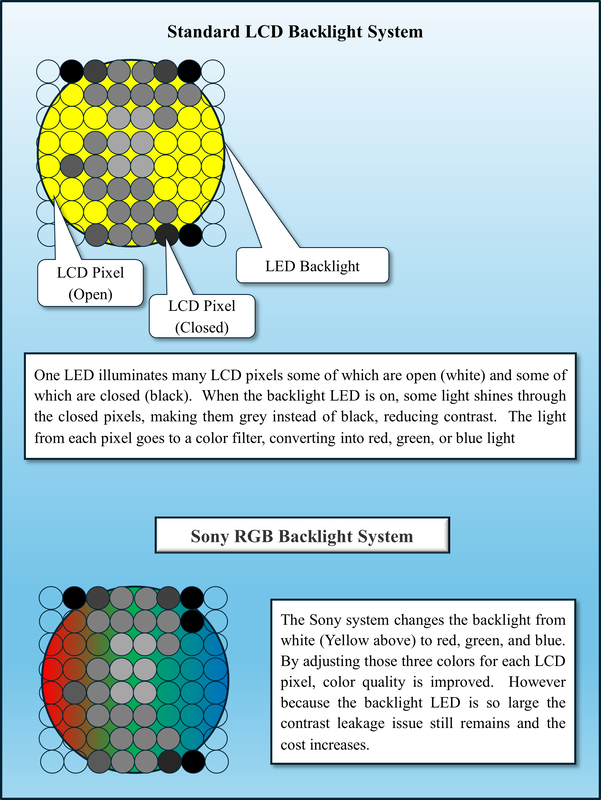
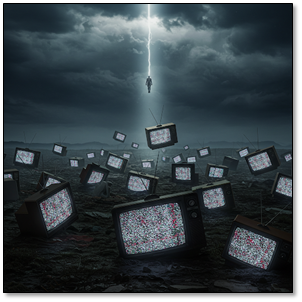
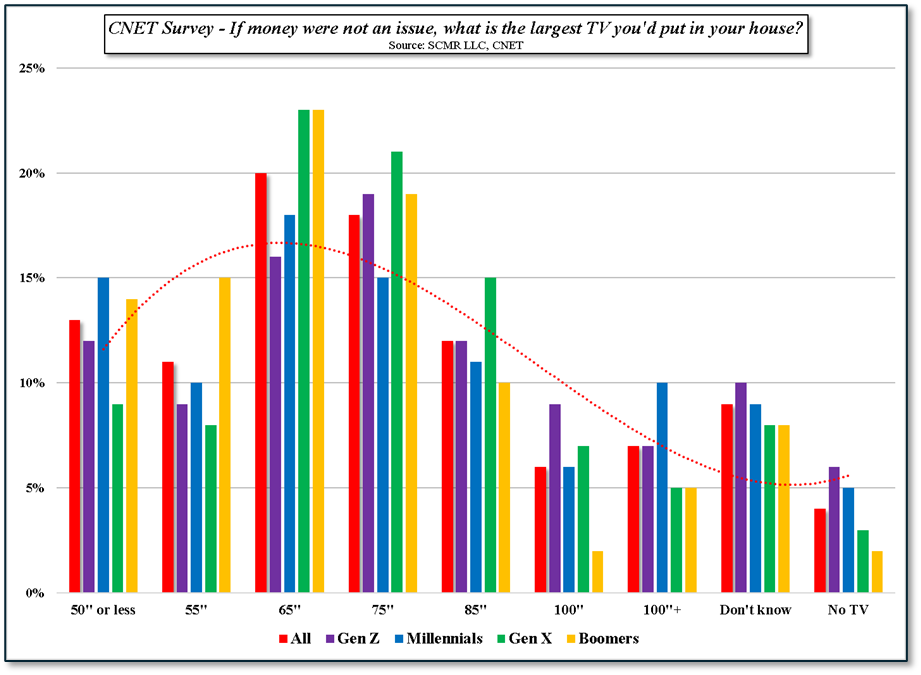
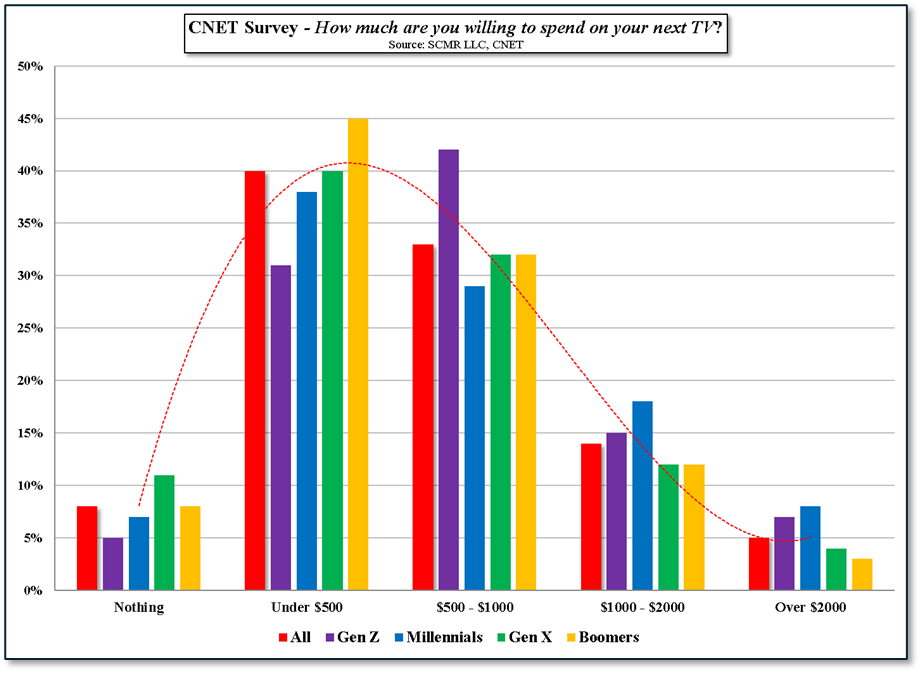
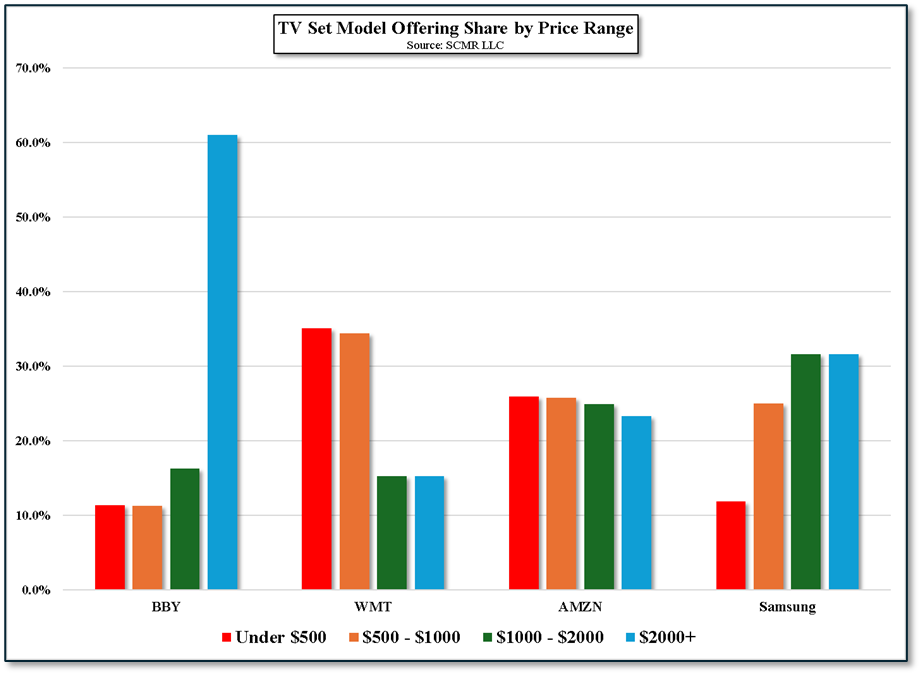

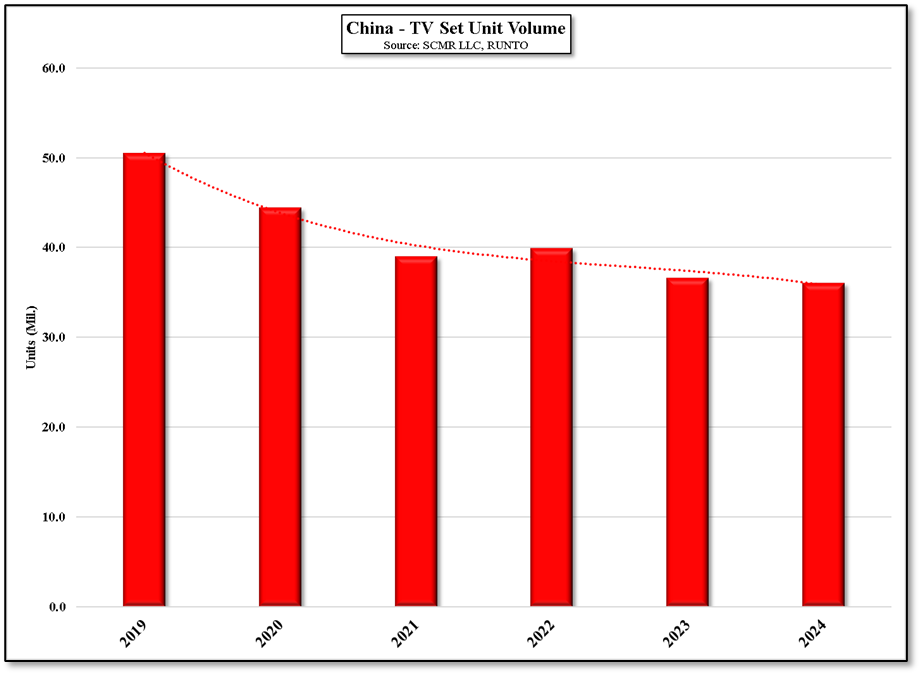
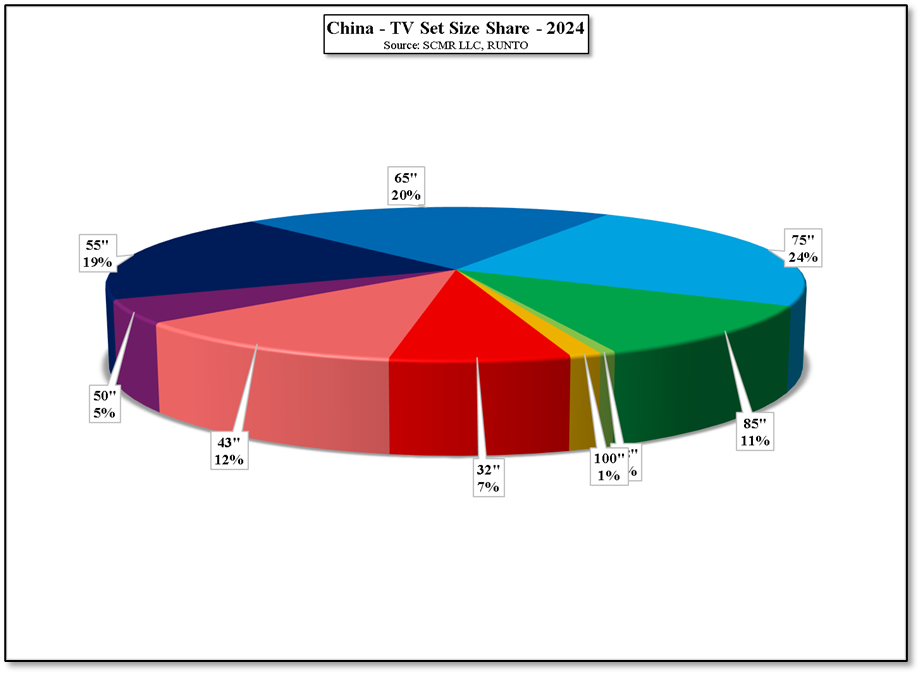

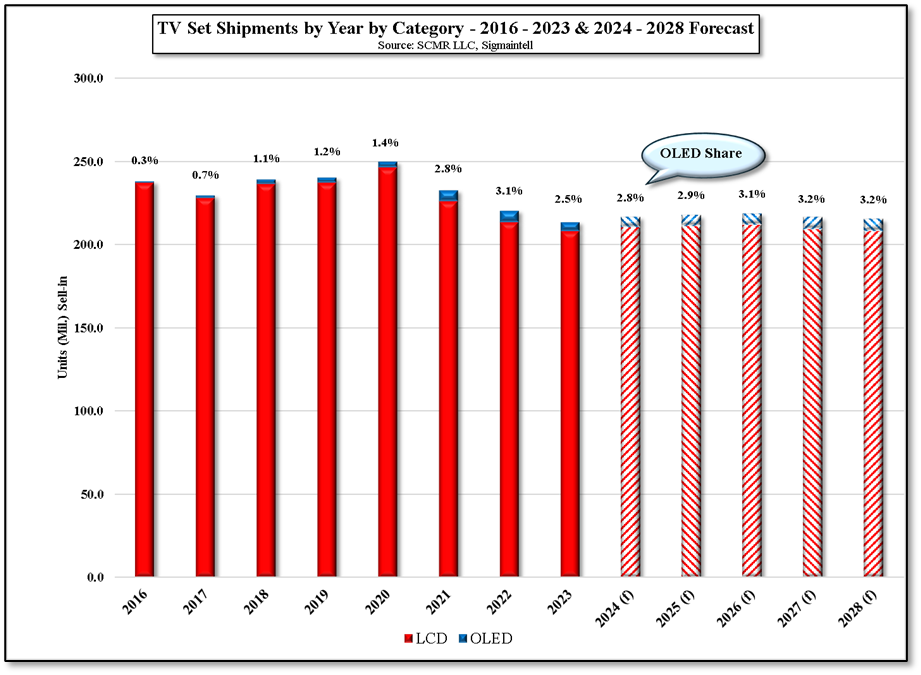
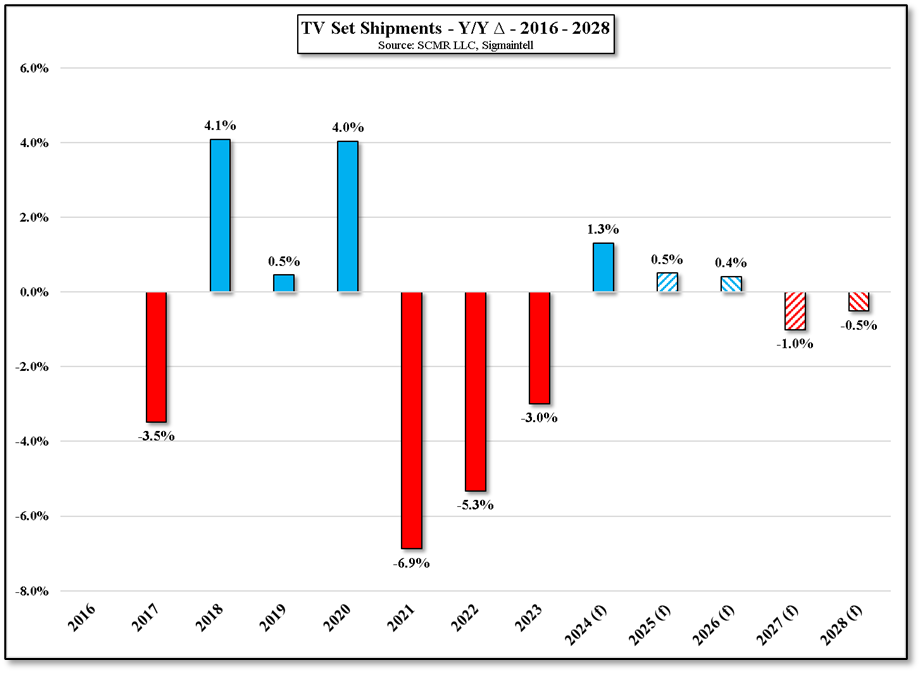
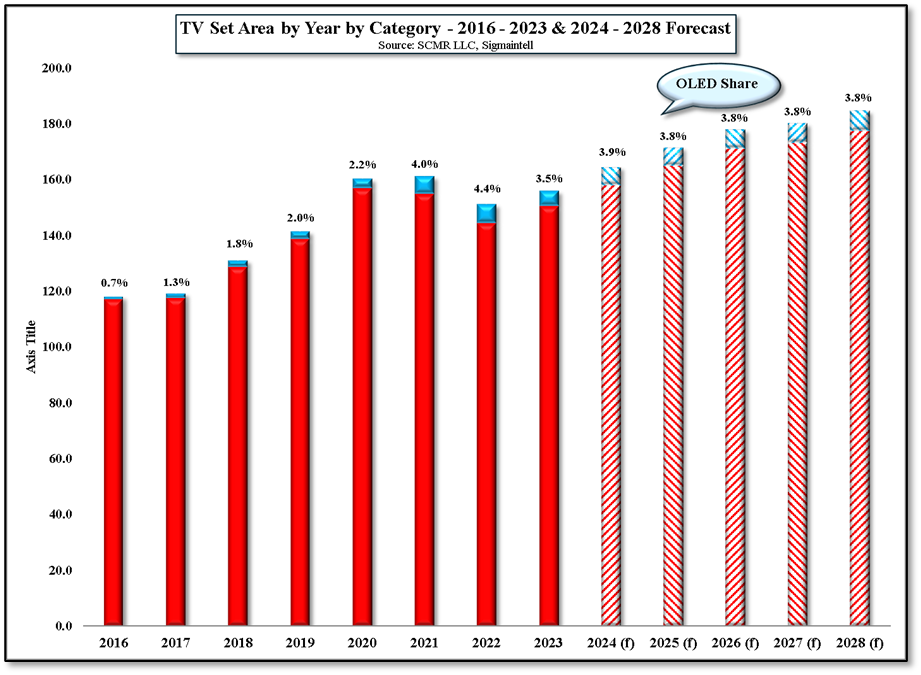

 RSS Feed
RSS Feed